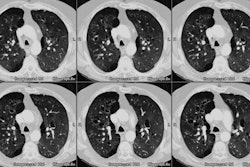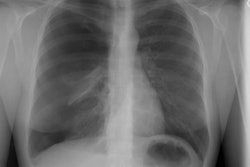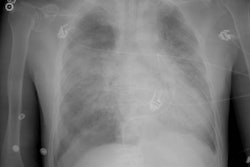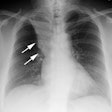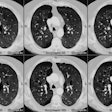AJR Am J Roentgenol 2000 Sep;175(3):811-8
CT findings of pneumonia after lung transplantation.
Collins J, Muller NL, Kazerooni EA, Paciocco G
OBJECTIVE: The purpose of this study was to describe the CT findings of pneumonia in
patients who had undergone lung transplantation and to determine if specific imaging
features existed for the different infectious organisms. MATERIALS AND METHODS: The
authors retrospectively reviewed the medical records of 262 patients with transplanted
lungs at two lung transplantation centers. Patients with a documented pneumonia and
correlating abnormal findings on CT (39 patients with 45 pneumonias) were included in the
study. RESULTS. Of 45 pneumonias, Cytomegalovirus (n = 15), Pseudomonas (n = 7), and
Aspergillus (n = 8) organisms were the most common single responsible infectious agents.
The most common CT findings of pneumonia consisted of consolidation (n = 37; 82%),
ground-glass opacification (n = 34; 76%), septal thickening (n = 33; 73%), pleural
effusion (n = 33; 73%), and multiple (n = 25; 56%) or single (n = 2; 4%) nodules. No
significant difference in the prevalence of findings was revealed among bacterial, viral,
and fungal pneumonias (p >.05, chisquare test). Of 25 pneumonias in patients with a
single transplanted lung, parenchymal abnormalities involved both lungs in 12 (48%), only
the transplanted lung in 11 (44%), and only the native lung in two (8%). CONCLUSION: The
manifestations revealed on CT of bacterial, viral, and fungal pneumonia after lung
transplantation are similar, consisting of a combination of consolidation, ground-glass
opacification, septal thickening, pleural effusion, or multiple nodules. Therefore, these
findings cannot be used to suggest the infectious organisms in this patient population.
PMID: 10954472, UI: 20411002
